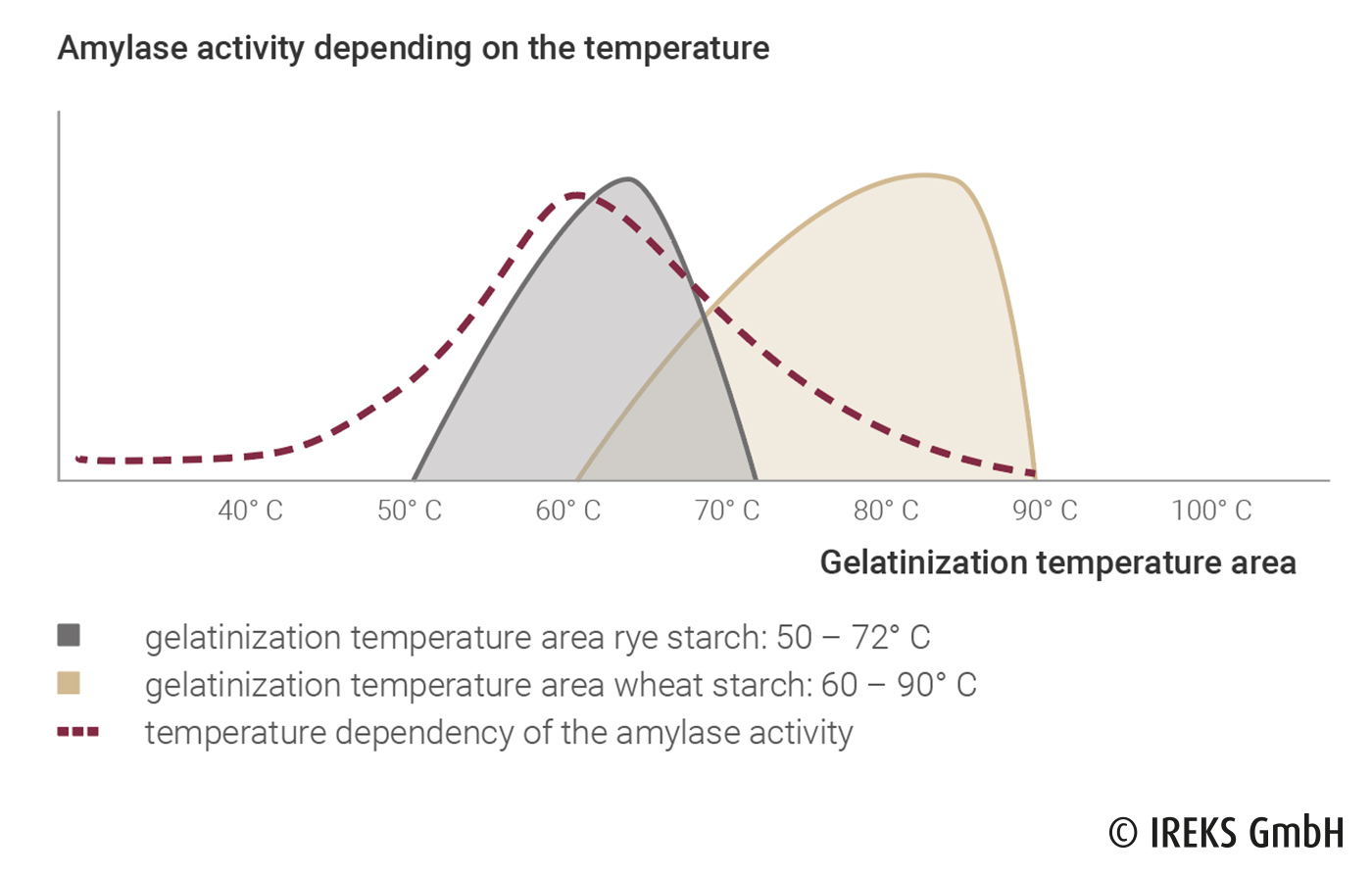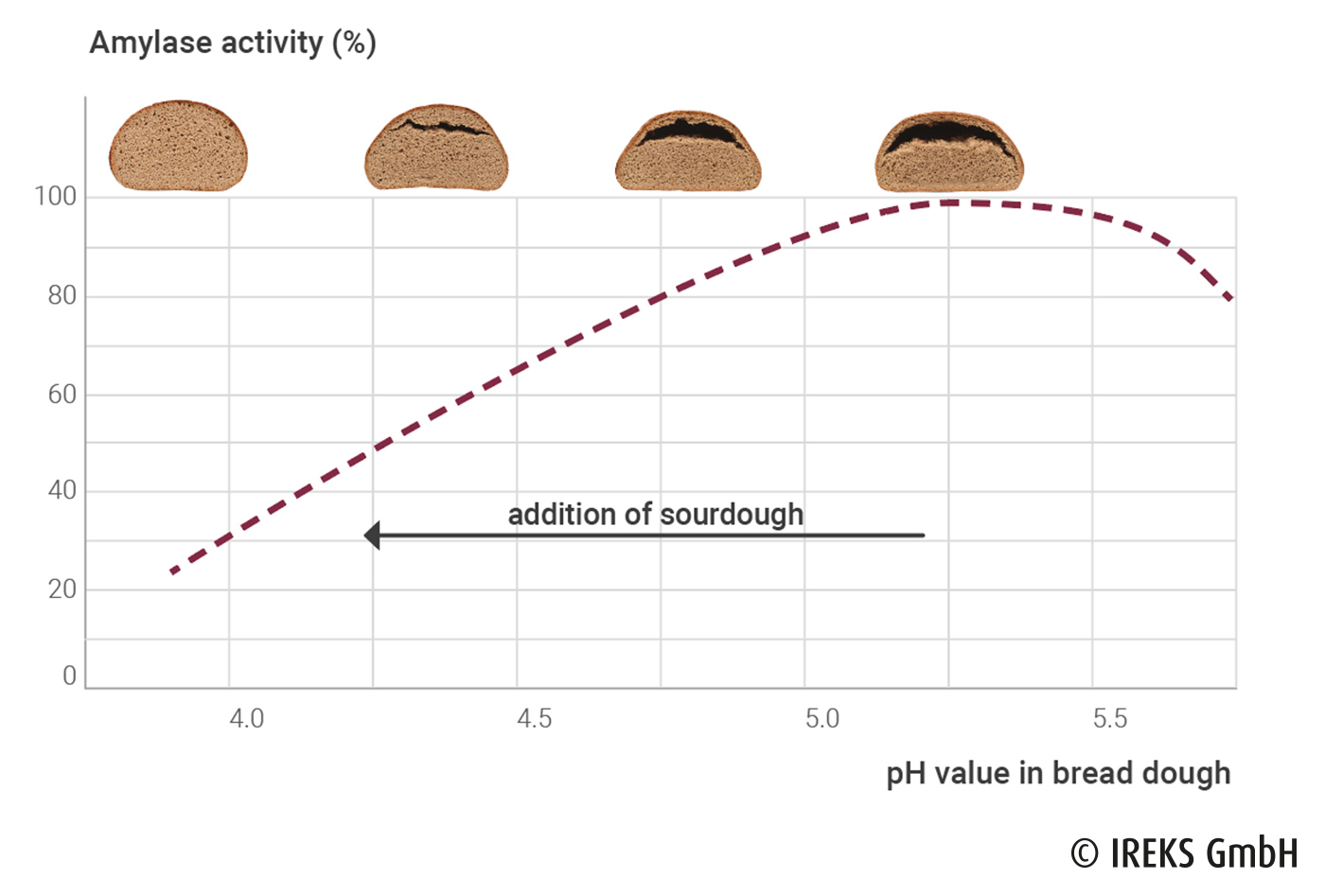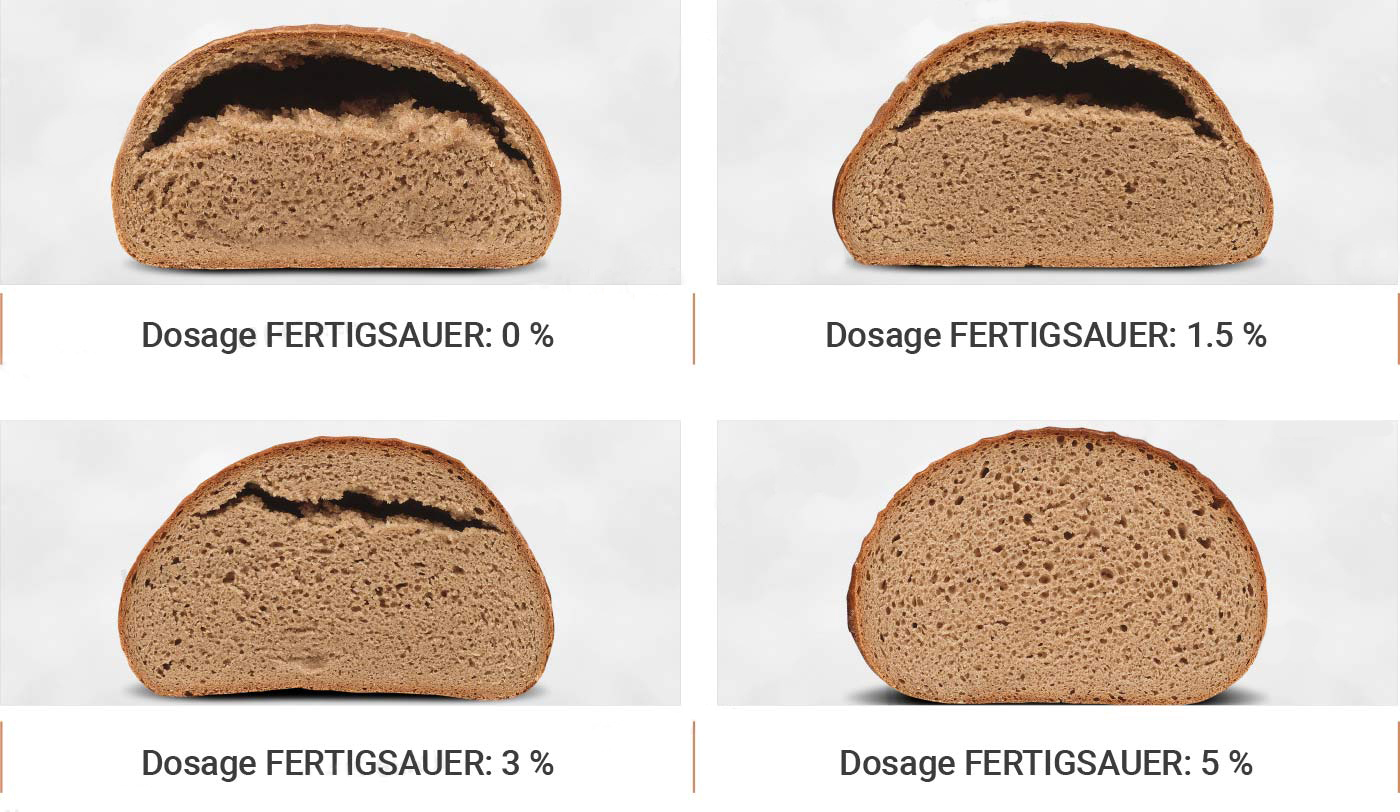The use of sourdough and/or dough acidifying agents mainly leads to a better quality of bread in regard to aroma, crumb properties and freshkeeping when processing percentages of rye flour of more than 20 %. In comparison to wheat flour, the dough formation in the case of rye flour is not based on the formation of a gluten network, but on the pentosans which are contained in the rye flour in a significantly higher percentage than in wheat flour.
The solubility and thus the water absorption of the pentosans increases if the pH value of the dough is reduced by the use of sourdough. Moreover, the elasticity of the crumb is enhanced with a falling pH value, the crumb tends not to form a ball and the bread can be sliced better. Over and above the aroma and taste, sourdoughs enhance the microbial stability and the freshkeeping by the lowering of the pH value.
In comparison to wheat flour, rye flour has a higher activity of starch decomposing α-amylases. Moreover, rye starch gelatinizes in a lower temperature area than wheat starch, which leads to the temperature optimum of the starch decomposing α-amylases being in the area of the gelatinization temperature of the rye starch. During gelatinization, the starch is particularly susceptible to enzymatic decomposition.
If the activity of the α-amylase is not inhibited, then a decomposition of the starch framework can occur, which then cannot bind sufficient dough water. This can lead from a damp and soggy crumb to a separation of the crust and thus prevent the formation of an elastic crumb with good slicing properties.
In addition to the temperature, the activity of the α-amylase is also influenced by the pH value. The pH optimum of the α-amylase lies in an area of pH 5 to 5.5. By the use of sourdough, the pH value of the bread dough is reduced, so that the α-amylase is inhibited in its activity and bread can be produced with an elastic crumb which has good slicing properties.
The falling number and the amylogram provide information on the enzyme activity and the properties of the starch of rye flours and are an indication of the amount of sourdough to be used (see Chapter Flour analysis).
In illustration 8.5, rye bread is shown which has been made using rye flour type 1150 with a falling number of approx. 120. Here, an increasing percentage of a dough acidifyingagent with a degree of acidity of 200 was processed (FERTIGSAUER). It is first with a quantity of addition of 5 % FERTIGSAUER that sufficient acid is introduced to the dough so that a stable crumb with good slicing properties can be achieved.



